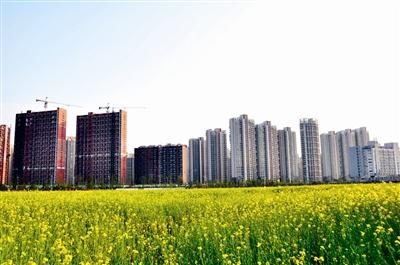Plenum decision charts new road for urbanization drive
- By Zhang Monan
 0 Comment(s)
0 Comment(s) Print
Print E-mail chinausfocus.com, November 25, 2013
E-mail chinausfocus.com, November 25, 2013
The decision on comprehensively deepening reforms, endorsed at the Third Plenum of the 18th Central Committee of the Communist of China and made public on November 15, charted a roadmap for comprehensive reforms. With significant reform measures clarified for such important sectors as fiscal and finance systems and State-owned enterprises, there are few direct mentions or words about urbanization. However, if reading between the lines, a major shift in the development of urbanization is too apparent to ignore.

Quality, not speed, holds the key to China’s new mode of urbanization. The past model for urbanization, which was categorized as “high speed but low efficiency”, “prioritizing investment but ignoring services”, and “bigger role for the government but lesser role for the market”, are no longer sustainable. It is crucial to shed the urbanization model of “being dominated by the government.” And when economic transformation and institutional innovations are taken into consideration, it is a must to improve the system for the healthy development of urbanization.
According to the roadmap rolled out at the plenum, the new urbanization will feature a gradual establishment of a system of social equity with “equal rights, equal opportunities and fair rules” as it’s main feature, will take the “market systems as the fundamentals and free competition as the base”, and will protect the rights of all to equal participation and development. By introducing new systems, the four supply factors – labor, land, capital and technology – will be rejuvenated. System and mechanism backing will be strengthened, and an overall upgrading of all factors, and high-quality urbanization will also be promoted.
Three imbalances will be reversed
Statements on urbanization in the plenum’s decision mean that future reforms will be aimed at reversing three imbalances. The first is to reverse the unbalanced phenomenon in which priority was given only to cities, not the countryside. The new mode of urbanization does not seek to convert the countryside into cities, but instead, to create a fair, equitable, and equal urban-rural relationship. Urban expansion used to be a one-way and extensive expansion, and a form of “invasive” “space acquisitions” from the rural areas. Practice has proven that this is an unsustainable development model. Public service resources should not be centralized only in big cities, and medium-sized and small cities and the vast rural areas should be entitled to equal services. By making services more available, it will help change the unbalanced dual structure in which the rural areas support and nurture the cities, farmers feed the urbanites, and agriculture nurtures industry, and will help promote the healthy and sustainable urban-rural integration.
The second is to reverse the unbalanced situation of stressing the demands and ignoring the expansion of supply. The fundamental role of urbanization does not seek to stimulate domestic demands. It is actually aimed at the effects of economies of scale generated by the industrial division through industry clustering, and aims at improving the efficiency of factor clustering generated by cooperation among cities. Urbanization means changes in the supply-demand structure, and the economies of scale and expansion of urban population will greatly promote the improvement in industrial division and employment structure.
This new mode of urbanization must bank on the forceful support by industries. Only when rational area distribution of industries and competitive industrial chains take shape, will it be possible to promote the clustering of urban factor resources, to achieve the rational division of work between the suburban districts and counties and their neighboring regions, and it could be possible to gradually eliminate the urban-rural limits and gaps. This will be the starting point for urbanization under a new supply-demand structure, and will be the destined road to achieve the innovation-driven urbanization.
The third is to reverse the unbalanced situation of giving priority to big cities and ignoring medium-sized and small cities. The new type of urbanization does not mean to ignore medium-sized and small cities or small towns. Of 661 cities in China, the number of medium-sized and small cities with a population of less than 500,000 is 533, accounting for 80.6% of the total, and total population of the medium-sized and small cities accounts for 59% of the national total. Medium-sized and small cities are evenly distributed across the country. Promoting the development of the medium-sized and small cities with job opportunity creation may help solve the employment problems for these cities, and the growth potential of these cities is enormous.





